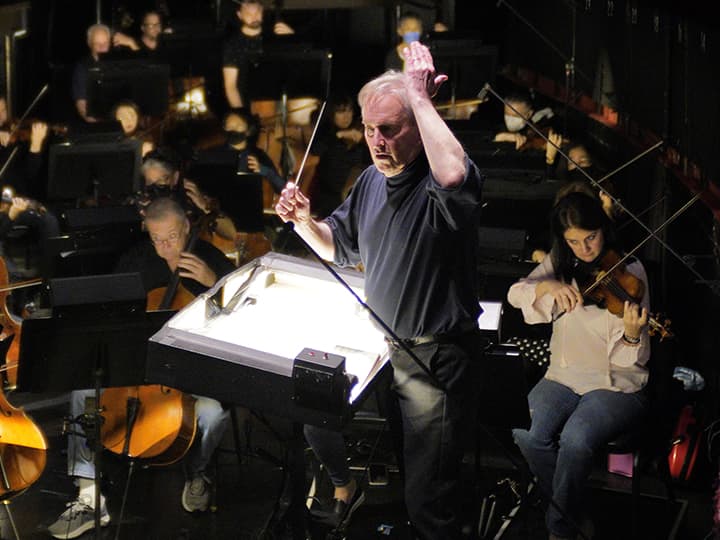A Note from Music Director James Conlon
Pierre-Augustin Caron de Beaumarchais, a man of many talents, is best known today for the worldwide success of a pair of comedies he authored, two thirds of a stage trilogy that accompanied the course of French society in the years leading up to and around the time of the Revolution. His legacy has been partially obscured, however, thanks to the inspiration that his plays provided for two undisputed masterpieces in the operatic literature.
Mozart’s The Marriage of Figaro would be a revolutionizing step, not in the social order but in the genre of opera buffa. It simultaneously established an unimagined level of compositional complexity and sophisticated dramatic perfection, defining a future largely to be realized (but never surpassed) in Italy during the first half of the 19th century. Rossini developed opera buffa, and with The Barber of Seville created a masterpiece that raised the bar for himself and for those that followed. The fact that the original plays translated so seamlessly into the operatic genre should come as no surprise, as Beaumarchais was a talented musician and originally conceived these works to be musical.
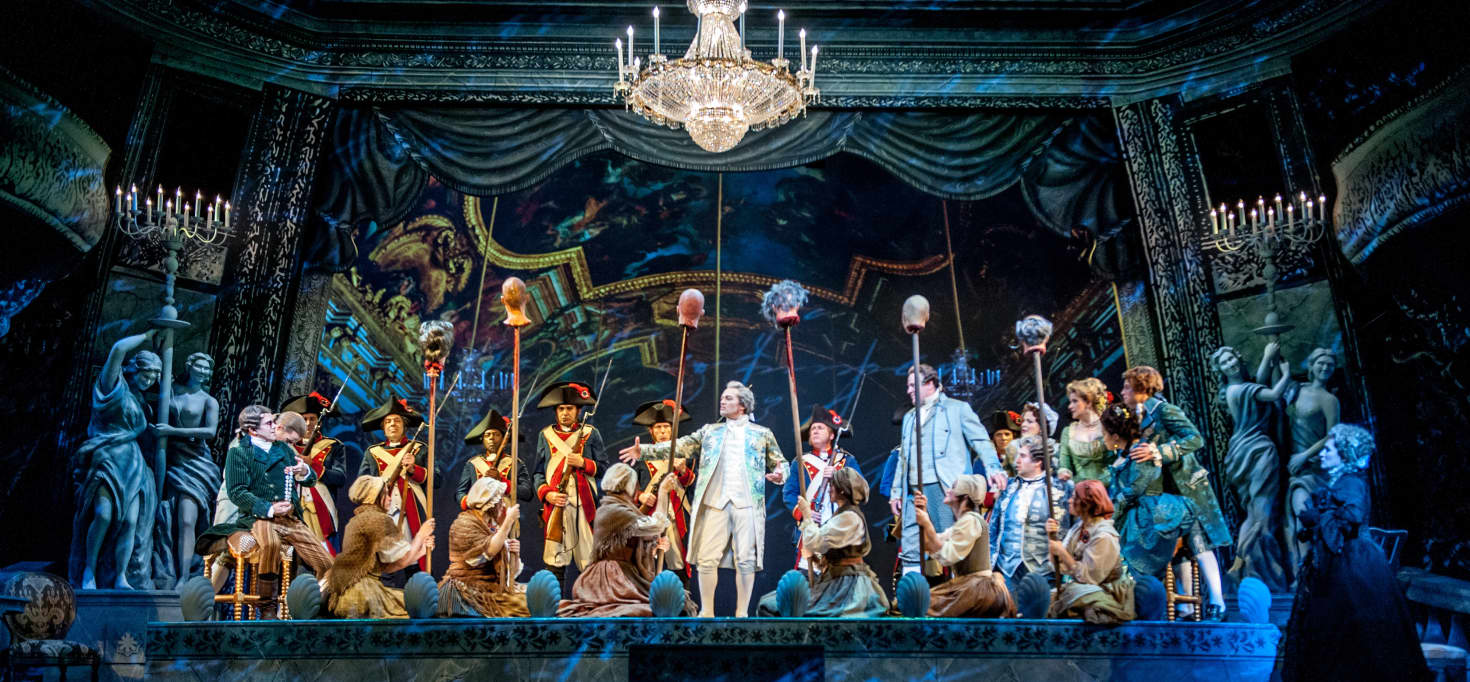
Photo credit: Craig T. Mathew
But in Beaumarchais’ time, his dramatic Figaro trilogy held its own with the public. The three plays are, in their English titles, The Barber of Seville, first performed in 1775; The Marriage of Figaro, completed in 1778 and premiered in 1784; and, finally, a play nearly forgotten today, The Guilty Mother, first performed in 1792, seven months before the execution of King Louis XVI.
Beaumarchais’ life reads like a drama, his professions and his fortunes fluctuating constantly. Born in 1732, Pierre-Augustin Caron, the son of a Calvinist master clockmaker, made his fortune in Paris in his father’s profession. Realizing that remaining Protestant would impede his career, he converted to Catholicism. By the age of 22 he became the king’s watchmaker, took a position as a court functionary and found himself in the vortex of power and influence. He married a rich widow whose fortune included a small property called Beaumarchais. He added it to his name, styling himself as “Caron de Beaumarchais” to confer the aura of aristocracy.
There is no question that his greatest creation, Figaro, is he himself. The Figaro plays are the first unconcealed examples of theatrical autobiography. The very name “Figaro,” in fact, derives from “fils de Caron” (son of Caron). To this day, the name is omnipresent as that of one of France’s largest and oldest continuing newspapers, Le Figaro.
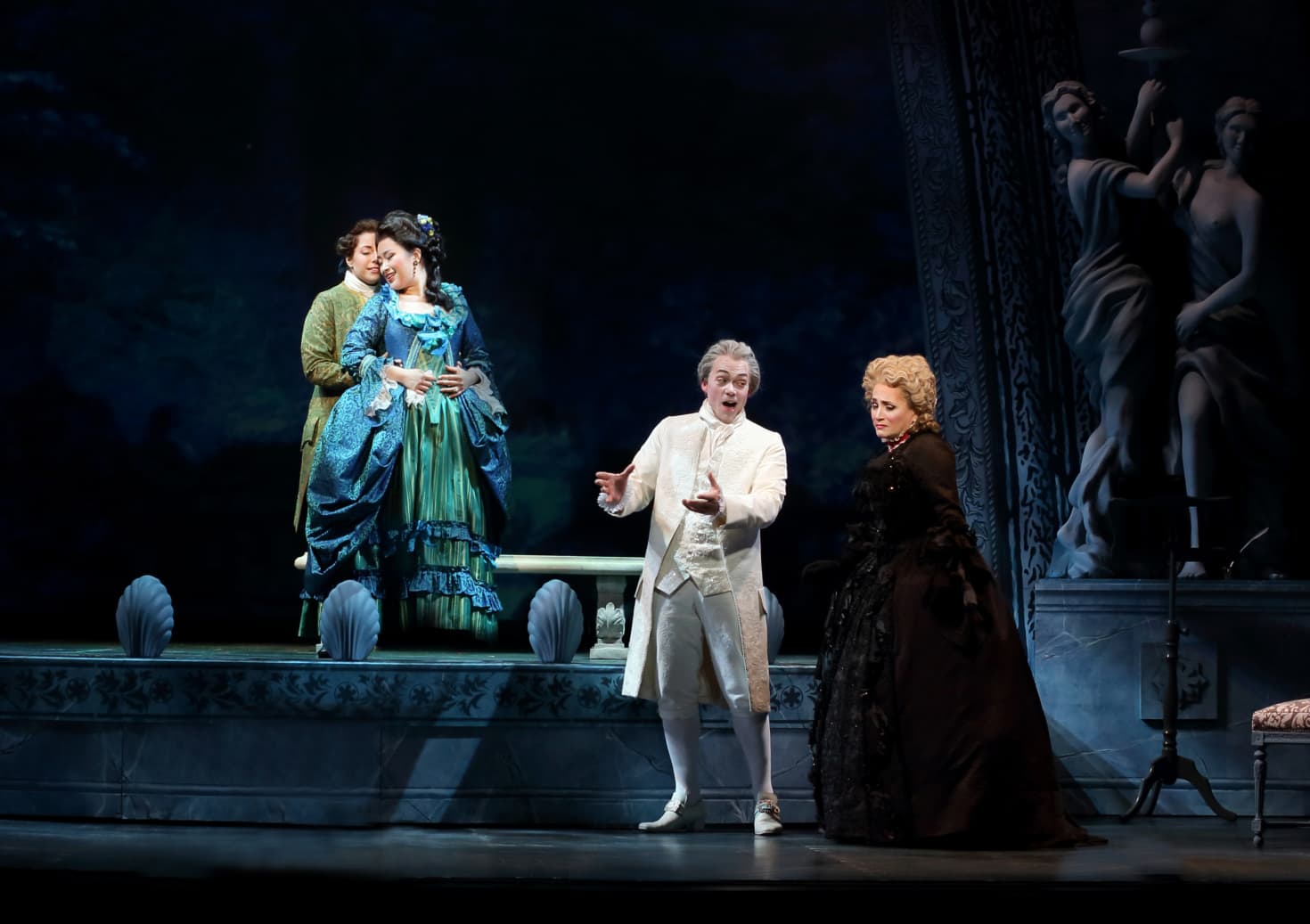
Photo credit: Craig T. Mathew
The trilogy’s three central figures are the only characters to appear in all three plays: Figaro, the wily but sympathetic servant himself; the Count of Almaviva, a young noble; and Rosina, an aristocratic young lady who becomes his Countess. They each exemplify one of the most ubiquitous social problems of the time: (il)legitimacy and inheritance. Figaro is discovered in the second comedy to be the illegitimate son of his ex-nemesis Doctor Bartolo and his housekeeper Marcellina. In the third play, both the Count and Countess are revealed to have offspring with other partners, the latter with Cherubino, the nascent young rake introduced in The Marriage of Figaro. The two illegitimate children, grown to adulthood when we meet them in The Guilty Mother, have fallen in love. The play’s complex plot revolves around their eventual—and legitimate—union.
A personal note to conclude: The presentation of this trilogy, although in a somewhat altered form, is an extension of a personal aspiration that dates back to my youth. The Barber of Seville is the work that made me decide to become a classical musician. It was the second opera I saw and remains in my mind the epiphany which was to define my life. Anything that had to do with Figaro interested me. I found a recording and, eventually, a score of Giovanni Paisiello’s earlier adaptation of The Barber of Seville, preceding Rossini’s by 34 years. I loved this opera too. Although understandably obscured by Rossini’s Barber, it was recognized as a masterpiece in its time.
By the time I graduated from Juilliard, I had met composer Darius Milhaud and conducted his La création du monde in his presence. When I found a score of Milhaud’s operatic rendering of the third Figaro play, La mère coupable, (The Guilty Mother) at the New York Public Library, I brought it home to play at the piano. From that time, I imagined a Figaro Trilogy. By 1976, I had conducted both Rossini’s and Paisiello’s Barbers, followed by many productions of Mozart’s Marriage of Figaro. Life plays funny games, however and I was never to conduct either Barber again, and a trilogy never resulted. I was distracted by Verdi, Wagner and Mahler, and didn’t think much more about it.

Photo credit: Craig T. Mathew
But then the Metropolitan Opera commissioned John Corigliano to complete the trilogy. He and his librettist, William Hoffman, chose not to write a straightforward setting of The Guilty Mother. They wanted to write a comic opera but felt the play wasn’t funny. So they used it as a point of departure, building on the period where Beaumarchais created this final work: the French Revolution and its aftermath. The result, The Ghosts of Versailles, suspends time through the use of the spirits, juxtaposing history and fantasy, opera buffa (retaining the chief elements of The Guilty Mother) and historic melodrama, all enclosed in an opera “fantastica” (my term, not theirs).
Act One is buffa; Act Two, grand opera. Marie Antoinette, King Louis XVI the French Revolution and the Terror are all historical. Figaro and company are buffa, but become caught in the Revolution themselves. Thus theater and reality, comedy and melodrama collide. This mix of this fantasy’s dual dramaturgy creates a striking interaction of styles, a quintessentially 20th-century musical vocabulary contrasting with neoclassic reminiscences of the two earlier Figaro operas.
I followed the rehearsals of the first production of The Ghosts of Versailles eagerly and was at the opera’s premiere at the Met on December 19, 1991. The thoughts of a trilogy came to life again. Subsequently, during my tenure as Principal Conductor of the Paris National Opera, John Corigliano and I discussed producing it there, perhaps even at Versailles. Those plans never materialized, but my old dream of a trilogy returned to earth, after a long orbit, and has landed at LA Opera this season.

